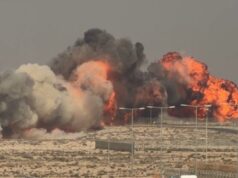The month of June holds sombre memories for India – especially this year. It marks 40 years since Operation Bluestar flushed out terrorists holed up in the Golden Temple in Amritsar. This also the 39th year since the bombing of Air India’s Kanishka – one of the deadliest acts of terrorism in aviation history.
Those living in a post 9/11 world (September 11, 2001 when Al Qaeda terrorists flew highjacked passenger aircraft into multiple targets in the US), the events leading up to the bombing of Air India’s Kanishka Flight AI 182 would seem unbelievable given the many in-your-face signs and alerts that were ignored.
Multilayered checks of baggage, even intrusive personal checks (body pat down searches, body scanners to x-ray people, removal of shoes, socks, belts wallets et al) are all the norm these days. Some checks can be randomly triggered by seemingly suspicious behavior or even by “suspicious” sounding names (recall actor Shahrukh Khan’s detention at several US airports.)
Airlines also prohibited passengers from carrying more than 100 millilitres of liquids as cabin baggage after authorities in the UK uncovered a terrorist plot to ignite liquid explosives on board airliners connecting to the United States and Canada in 2006.
The 1985 Kanishka bombing predates all this by at least decade and a half. And illustrates the double standards (tinged with racism) adopted vis a vis terrorism by the developed world till today.
Remember how the world rallied behind the US after 9/11? Well, the 1985 Kanishka bombing was an unprecedented act of terrorism targeting a passenger airline at that time. And India – a third world country and not exactly a “friend” of the West (these were still the Cold War years) then stood alone.
Even today, after many terrorist attacks in the West ( UK in 2005, France in 2015, Belgium in 2016), there is a distinction between “my terrorist” and “your terrorist.”
How else to explain the Canadian Parliament’s moment of silence on June 18, honoring the memory of Hardeep Singh Nijjar, a Sikh Canadian shot dead last year? Or even the callous shoddiness with which Canada handled the investigation into the Kanishka tragedy and the perfunctory statement this week that investigations into the case were still ongoing.
To illustrate my point, I am going to juxtapose the Kanishka tragedy with the bombing of Pan Am Flight 103 over Lockerbie in Scotland in 1988.
Most passengers of the Air India Boeing 747 were Canadian nationals, but mainly of Indian origin. (The official break up is 268 Canadian, 27 British, and 24 Indian). Investigations later concluded that a bomb packed into a suitcase onboard AI 182, had caused the explosion at around 31,000 feet over the Atlantic, killing all 329 on board.
The Canadian British Columbia Court (which heard six charges against two Sikh men — suspects Ripudaman Singh Malik and Ajaib Singh Bagri — through April 2003 to December 2004) was told that the explosive device was loaded in Toronto. The suitcase did trigger some alerts for suspicious cargo but it was loaded onto the aircraft anyway.
The bombing of AI 182 was the handiwork of Sikh terrorists from the Babbar Khalsa group. And the likeliest motive was revenge for the storming of the Golden Temple complex in June 1984 at the height of Sikh militancy in Punjab.
Cut to 1988, 259 people on board Pan Am flight 103, from London to New York, were killed when their aircraft exploded on December 21. Another 11 were killed in Lockerbie by falling aircraft debris. The dead included citizens of 21 countries, among them 190 Americans. The Western media repeatedly describes it as the largest terrorist attack in American history until 9/11.
I believe there is at least one eerie similarity between the bombings. The explosive devices in both cases were in suitcases loaded onto the aircraft. As in the case of Kanishka, the passenger who checked in the luggage on Pan Am 103 never boarded the flight. One wonders if the Kanishka tragedy were studied more carefully, could Pan Am Flight 103 have been saved? The answer is in the realm of supposition, but I do think it could have set a precedent, rang alarm bells somewhere.
And this is where the similarities end and ironies begin.
For one, in the Lockerbie case, the US and other Western countries closed ranks on the investigation. After extensive multinational investigation, “British and American governments in November 1991 announced indictments and warrants for the arrests of Abdel Basset Ali al-Megrahi and Lamen Khalifa Fhimah,” says a US Federal Bureau of Investigation report, filed on the 30th anniversary of the Lockerbie bombing in 2018.
The trial in the Lockerbie case started in May 2000 and ended in January 2001 – ie under a year.
In the case of AI 182, it took Canada 21 years to set up a commission of inquiry into the 1985 Air India bombing by Canadian Sikh terrorists that killed all 329 people on board, most of them of Indian origin. Now, 39 years later, a Canadian police officer was quoted on X by foreign policy analyst Brahma Chellaney as saying, “Our investigative efforts remain active.”
The single person convicted in the Air India case was Inderjit Singh Reyat. Bagri and Malik mentioned earlier were let off due to insufficient evidence.
Recent news reports have recalled that in May 2006, Canada announced a public inquiry, led by retired Supreme Court of Canada Justice, John C Major, into the Kanishka bombing.
In June 2010, when Major released his report of over 3,200-pages, it stood as a searing indictment of shockingly unbelievable lapses on the part of Canada. The report said Canadian authorities should have known that AI 182 was a potential terrorist target, blaming a “cascading series of errors” by the Canadian government, the Royal Canadian Mounted Police, and the Canadian Security Intelligence Service for the tragedy.
In Major’s own words, the Kanishka bombing is the “worst mass murder in Canadian history.”
In the case of Lockerbie, there were a series of crippling sanctions imposed on Libya by the West, removed only after Tripoli paid $ 2.7 billion in reparation, agreed to in 2003.
In the AI 182 case, forget reparation, there is still quibbling over whether it was terrorism. Rather the Canadian Parliament has honoured the memory of a man who espoused the same philosophy as those who blew up AI 182. How does one explain it?
Besides the fact that most of the AI 182 dead were Indian origin Canadians (and not white Canadians), the answer also lies in politics.
Currently, Prime Minister Justin Trudeau’s Liberal Party has representatives elected from nine federal ridings (electoral constituencies) dominated by Punjabi Sikhs (some of whom are vocal supporters of Khalistan). There are 11 other constituencies in which they are in sizeable numbers. In total, there are 338 ridings or constituencies, according to Canadian media. Anyone with prime ministerial ambitions needs this vote bank.
It explains Trudeau’s statement in support of the farmer’ protests in India in 2020-21 and his famous 2016 remark that he has more Sikhs in his cabinet than Narendra Modi. Interestingly, bulk of those who secure immigration clearance to settle in Canada are from Punjab (according to Canadian media).
This brings one to a vital question – will Canadian politics really change towards India after Trudeau?
My guess (based on conversations with watchers of Canadian politics) is no. For one — the vital importance of the Sikh vote. Second, when the Canadian Parliament honored Nijjar’s memory, politicians across the divide joined in. In other words, the Conservative Party headed by Pierre Poilievre and the Liberals were together in this.
The chill in India Canada politics is therefore set to last – at least until Canadian politicians place a premium on ties with India and less on its Khalistani vote bank.
Elizabeth Roche is Associate Professor at Jindal Global University, Haryana
Elizabeth Roche is Associate Professor at Jindal Global University, Haryana




